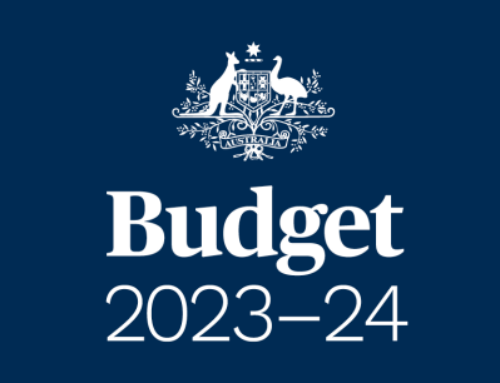What a difference a year makes! Last year, we were facing very uncertain times and grappling to understand what the future will look like, so much so, even the Federal Budget was delayed. Fortunately, the outlook is now more optimistic with global vaccines rolling out and the Australian economy generally performing well.
Business & employers
Temporary full expensing extension (depreciation)
Date of effect: Assets acquired from 7:30pm AEDT on 6 October 2020 and first used or installed ready for use by 30 June 2023
Businesses with an aggregated turnover of less than $5 billion will be able to continue to fully expense the cost of new depreciable assets and the cost of improvements to existing eligible assets in the first year of use. Introduced in the 2020-21 Budget, this measure will enable an asset’s cost to continue to be fully deductible upfront rather than being claimed over the asset’s life, regardless of the cost of the asset. The extension means that the rules can apply to assets that are first used or installed ready for use by 30 June 2023.
Certain expenditure is excluded from this measure, such as improvements to land or buildings that are not treated as plant or as separate depreciating assets in their own right. Expenditure on these improvements would still normally be claimed at 2.5% or 4% per year.
The car limit will continue to place a cap on the deductions that can be claimed for luxury cars.
From 1 July 2023, normal depreciation arrangements will apply and the instant asset write-off threshold for small businesses with turnover of less than $10 million will revert back to $1,000.
Second-hand assets
For businesses with an aggregated turnover under $50 million, full expensing also applies to second-hand assets.
Small business pooling
Small business entities (with aggregated annual turnover of less than $10 million) using the simplified depreciation rules can deduct the full balance of their simplified depreciation pool at the end of the income year while full expensing applies. The provisions which prevent small businesses from re-entering the simplified depreciation regime for five years if they voluntarily leave the system will presumably continue to be suspended.
Opt-out rules
Taxpayers can choose not to apply the temporary full expensing rules to specific assets, although this choice is not currently available to small business entities that choose to apply the simplified depreciation rules for the relevant income year.
Temporary loss-carry back extension
Date of effect: Losses from the 2019-20, 2020-21, 2021-22 or 2022-23 income years
Companies with an aggregated turnover of less than $5 billion will be able to carry back losses from the 2019-20, 2020-21, 2021-22 and 2022-23 income years to offset previously taxed profits in the 2018-19, 2019-20, 2020-21 and 2021-22 income years.
Under this measure tax losses can be applied against taxed profits in a previous year, generating a refundable tax offset in the year in which the loss is made. The amount carried back can be no more than the earlier taxed profits, limiting the refund by the company’s tax liabilities in the profit years. Further, the carry back cannot generate a franking account deficit meaning that the refund is further limited by the company’s franking account balance.
The tax refund will be available on election by eligible businesses when they lodge their 2020-21, 2021-22 and 2022-23 tax returns.
Before the measure was introduced in the 2020-21 Budget, companies were required to carry losses forward to offset profits in future years. Companies that do not elect to carry back losses can still carry losses forward as normal.
This measure will interact with the Government’s announcement to extend full expensing of investments in depreciating assets for another year. The new investment will generate significant tax losses in some cases which can then be carried back to generate cash refunds for eligible companies
Residency tests rewrite
Date of effect: The first income year after the date of Royal Assent of the enabling legislation.
Determining whether an individual is a resident of Australia for tax purposes can be complex. The current residency tests for tax purposes can create uncertainty and are often subject to legal action.
The Government will replace the individual tax residency rules with a new, modernised framework. The primary test will be a simple ‘bright line’ test – a person who is physically present in Australia for 183 days or more in any income year will be an Australian tax resident. Individuals who do not meet the primary test will be subject to secondary tests that depend on a combination of physical presence and measurable, objective criteria.
Education, skills & training
Apprenticeship scheme uncapped
Boosting Apprenticeship Commencements provides a 50% wage subsidy to employers and Group Training Organisations to take on new apprentices and trainees. The measure will uncap the number of eligible places and increase the duration of the 50% wage subsidy to 12 months from the date an apprentice or trainee commences with their employer.
From 5 October 2020 to 31 March 2022, businesses of any size can claim the Boosting Apprenticeship Commencements wage subsidy for new apprentices or trainees who commence during this period. Eligible businesses will be reimbursed up to 50% of an apprentice or trainee’s wages of up to $7,000 per quarter for 12 months.
Superannuation
$450 per month threshold for super guarantee eligibility removed
Date of effect: The first financial year after Royal Assent of the enabling legislation, expected to be 1 July 2022
Currently, employees need to earn $450 per month to be eligible to be paid the superannuation guarantee. This threshold will be removed so all employees will be paid super guarantee regardless of their income earned.
The Retirement Income Review estimated that around 300,000 individuals would receive additional superannuation guarantee payments each month once the threshold is removed.
Work test repealed for voluntary superannuation contributions
The first financial year after Royal Assent of the enabling legislation, expected to be 1 July 2022
Individuals aged 67 to 74 years will be able to make or receive non-concessional or salary sacrifice superannuation contributions without meeting the work test. The contributions are subject to existing contribution caps and include contributions under the bring-forward rule.
Currently, the ‘work test’ requires individuals aged 67 to 74 years to work at least 40 hours over a 30 day period in a financial year to be able to make voluntary contributions (both concessional and non-concessional) to their superannuation, or receive contributions from their spouse.
Personal concessional contributions will remain subject to the ‘work test’ for those aged between 67-74.
Expanded access to ‘downsizer’ contributions from sale of family home
Date of effect: The first financial year after Royal Assent of the enabling legislation, expected to be 1 July 2022
The eligibility age to access downsizer contributions will decrease from 65 years of age to 60.
Currently, downsizer contributions enable those over the age of 65 to contribute $300,000 from the proceeds of selling their home to their superannuation fund. These contributions are excluded from the existing age test, work test and the $1.7 million transfer balance threshold (but will not be exempt from your transfer balance cap).
Both members of a couple can take advantage of the concession for the same home. That is, if a couple have joint ownership of a property and meet the other criteria, both people can contribute up to $300,000 ($600,000 per couple).
Downsizer contributions apply to sales of a principal residence owned for the past ten or more years.
Sale proceeds contributed to superannuation under this measure will count towards the Age Pension assets test.
Low and middle income tax offset extended
Date of effect: From 1 July 2021 to 30 June 2022
As widely predicted, the Low and Middle Income Tax Offset (LMITO) will be extended for another year. The LMITO provides a reduction in tax of up to $1,080 for individuals with a taxable income of up to $126,000 and will be retained for the 2021-22 year.
Child care subsidy increase for families with multiple children under 5 in child care
From 1 July 2022 the Government will:
- Increase child care subsidies available to families with more than one child aged five and under in child care, and
Remove the $10,560 cap on the Child Care Subsidy. - For those families with more than one child in child care, the level of subsidy received will increase by 30% to a maximum subsidy of 95% of fees paid for their second and subsequent children (tapered by income and hours of care).
Under the current system, the maximum child care subsidy payable is 85% of child care fees and it applies at the same rate per child, regardless of how many children a family may have in care.
Why? In October 2020, analysis by the Grattan Institute revealed that mothers lose 80%, 90% and even 100% of their take-home pay from working a fourth or fifth day after the additional childcare costs, clawback of the childcare subsidy, and tax and benefit changes are factored in.
“Unsurprisingly, not many find the option of working for free or close to it particularly attractive. The “1.5 earner” model has become the norm in Australia. And our rates of part-time work for women are third-highest in the OECD.
Childcare costs are the biggest contributor to these “workforce disincentives“. The maximum subsidy is not high enough for low-income families, and the steep taper and annual cap limit incentives to work beyond three days, across the income spectrum,” the report said.
JobTrainer extended
The Government has committed an additional $500 million to extend the JobTrainer Fund by a further 163,000 places and extend the program until 31 December 2022. JobTrainer is matched by state and territory governments and provides job seekers, school leavers and young people access to free or low-fee training places in areas of skills shortages.





Leave A Comment